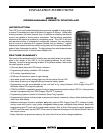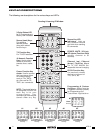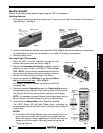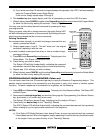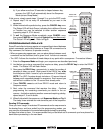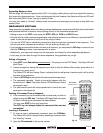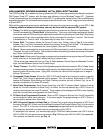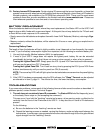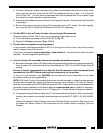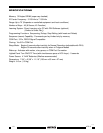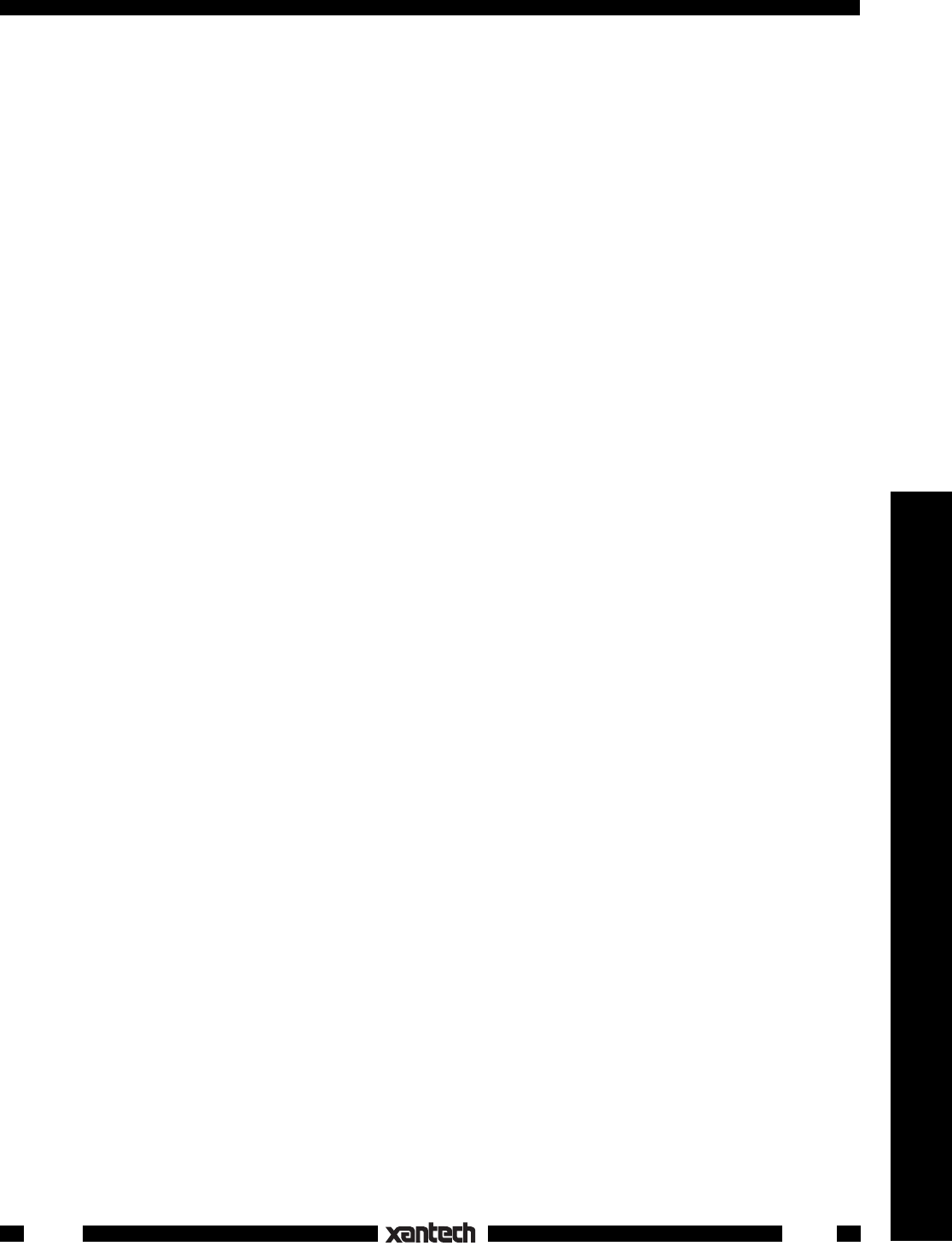
9
Controllers
URC-2
ADVANCED PROGRAMMING WITH DD4 SOFTWARE
The COM Port (Fig. 13), in addition to cloning, allows the URC-2 to be programmed using Xantech's optional
DD4 Dragon Drop-IR™ system, with the ease and efficiency of your Windows
®
-based PC. Complete
"virtual" programming of any configuration of the URC-2 (as well as the Xantech Smart Pad
3
and Waterpad
keypads) is possible. All commands can be easily tested while still in the "virtual" stage, prior to transferring
to a real URC-2.
While all the programming previously mentioned in this manual can be done manually on the URC-2,
the
following additional advanced functions can only be done with the optional DD4 system:
1. Tiering. The ability to program sequences onto two tiers or levels on any Source or Function key. The
2nd tier is accessed by a "Push & Hold" of the tiered key. This is very useful when working with related
commands, such as CD Scan that you might want to work with the same key as Track Skip. After tiering
is programmed, the 1st tier is activated when the key is pressed for less than 1 second. The 2nd tier
is accessed by a "Press & Hold" of the same key for more than 1 second.
2. Cursor Shift. This feature allows the Cursor Function Key Cluster (refer to Fig. 2) to be shifted
between Tier 1 and Tier 2 commands, without the necessity of using "Push & Hold". This allows more
rapid execution of Tier 2 commands for some systems (such as DVD control).
3. Punch. Allows commands that are common to all 8 Sources (banks), such as Volume or Mute, to be
"Punched Through" to all 8 banks. This avoids the tedium of teaching the same command to the same
key 8 times (one time for each bank).
4. Copy & Paste. Allows you to Copy single or sequenced commands from any given key and Paste them
to any other key of the same type* without having to relearn them.
*Of the same type means that you can Copy & Paste between Source Keys and between Function
Keys, but
not
between Source and Function Keys.
5. "Sleep" Timeout. The URC-2 turns off the lighted keypad and the active source LED to "Sleep" mode
to conserve battery power. As received from the factory, the default setting for the URC-2 is 6 seconds,
beginning after the last key press. Using DD4, the time-out value can be changed over a range of 1
through 10 seconds.
6. Changeable Code Groups. Allows the URC-2 IR Code Group to be changed to match a specific
Smart Pad
3
Code Group in advanced control systems. This, for instance, would allow a URC-2 to
operate the Speaker Relay Muting and Bank Tracking functions on such a Smart Pad
3
via an IR
receiver connected on the same IR network.
7. Bank Track Programming. Each Source (bank) key of a URC-2 outputs a Bank Tracking Code to
cause the Source indicators on Smart Pad
3
's to follow the Source selected by a URC-2 via an IR
receiver connected on the same IR network. These codes can be changed via DD4 to more logically
work with source button arrangements on Smart Pad
3
's.
8. PC Back-Up of Programmed Contents. When a URC-2 project is finished, the "virtual" keypad file
can be stored for future client reference. If, for some reason, the programming in a URC-2 is lost, it
can be quickly restored from these files.
9. URC-2 Program Transfers to Smart Pad
3
's. A Smart Pad
3
project may be dumped to a URC-2 and
the easily carried URC-2 then used to download the project to all desired Smart Pad
3
's in the various
rooms. The URC-2, in this way, serves as a temporary storage medium for the Smart Pad
3
project.
The project so stored will not match the key arrangement of the URC-2.
To accomplish the transfer, you would simply plug a COM Port cable between the URC-2 and an
LM110 or PM110 in the same manner as shown in Fig. 13. Be sure the LM110 or PM110 are powered.
Then execute the transfer (clone) per Fig. 14.



